Are you seeking relief from student loan payments and looking for Student Loan Forgiveness 20 Years? Consider exploring the Public Service Loan Forgiveness (PSLF) program, which offers the potential for student loan forgiveness within 20 years through consistent qualifying payments while working full-time in eligible public service roles.
Table of Contents
The students who belong to the family with lower financial backgrounds need to take education loans to cover their educational expenses. These loans can be borrowed both from the federal government and private lenders. The government loan programs come with more benefits and perks whereas the private education loans have strict repayments and other disadvantages. Sometimes there is some relaxation for students who have scored a milestone or big achievement.
One such relaxation is the loan forgiveness program. The program is very rare and is provided to around one in a thousand students. If you are looking for student loan forgiveness for 20 years then you are at the right place. The article offers a comprehensive guide on loan forgiveness.
Are Federal Student Loans Forgiven After 20 Years?
Federal student loans can have the possibility of being forgiven after 20 years. However, there is a need to meet some specific conditions that are crucial for eligibility. The qualification involves being a student borrower with Direct Loans for undergraduate study and enrollment in an income-driven repayment plan. Maintaining consistent, on-time payments is vital throughout the 20 years, with progress toward forgiveness paused during the forbearance.
For parent borrowers who have borrowed PLUS Loans, forgiveness eligibility is not in existence. The same can be enjoyed once the loan is consolidated into a federal Direct Consolidation Loan in the name of the student only. This same condition applies to Perkins and other types of private Loans as well. It is important to keep in mind that the details of loan forgiveness rules vary depending on the loan type and the chosen repayment plan.
Though parents using PLUS Loans may not initially qualify for loan forgiveness, consolidating these loans into a federal Direct Consolidation Loan could change eligibility. Explore how Biden’s student loan forgiveness application might offer new avenues for loan relief in this context.
Similarly, the criteria for loan forgiveness also apply to Perkins Loans. Eligibility criteria for loan forgiveness may vary slightly based on the specific loan type and chosen repayment plan, particularly for options like student loan forgiveness over 20 years.
Federal Student Loan Forgiveness Programs
The federal government’s initiatives for 20-year loan forgiveness play a crucial role when it comes to the income-driven repayment plans for federal student loans. This feature allows it to be present apart from alternatives accessible to those with private education loans.
This is designed for effective payment management within monthly budgets along with income-driven repayment plans. These repayments are processed monthly based on a specific percentage of income or any amount exceeding 150% of the federal poverty line as specified by the US government.
These programs are usually offered to the students who come under the category of poverty line. While to enhance payment manageability all these plans extend the repayment timeline. This leads to higher interest payments compared to a standard 10-year repayment plan.
The Forgiveness eligibility is attainable after completing 20 years of payments under diverse income-driven repayment plans. The loan forgiveness includes options spanning two decades, known as Student loan forgiveness over 20 years.
Revised Pay As You Earn (REPAYE) Plan: Monthly payments fixed at 10% of the income of the borrower which is subject to annual reevaluation. Student loan Forgiveness is available after 20 years for undergraduate loans or 25 years for graduate school loans in such a situation.
Pay As You Earn (PAYE) Plan: The Monthly repayments will proceed with 10% of the income of the borrower. The best part is that it will not exceed the standard 10-year repayment plan. Forgiveness will be granted after 20 years in this situation.
Income-Based Repayment Plan: In income-based repayment plans the Payments will be set at 10% of the discretionary income of the borrower. The Forgiveness is accessible after 20 years or 25 years based on the borrowing date. There are a lot more aspects of the same. You need to check for the terms and conditions of the loan.
Income-Contingent Repayment (ICR) Plan: In this, the Monthly payments are generally equivalent to 20% of discretionary income. Forgiveness can be attainable after 25 years in this situation.
Public Service Loan Forgiveness
Employees who are working in government or non-profit sectors can have the opportunity to enjoy loan forgiveness through the Public Service Loan Forgiveness Program. This initiative allows borrowers to get loan forgiveness after a decade of full-time employment in the government sector.
Some of the government branches include the U.S. government agencies, military entities, and nonprofit organizations. There are some qualifications that involve making payments under one of the four income-driven repayment plans.
Student Loan Forgiveness 20 Years by Loan Type
The Direct Student Loans from the U.S. Department of Education are best recommended for securing forgiveness after 20 years. However, the specific type of Direct Loan influences the process. These types are mentioned below, let’s have a look:
1. Direct Subsidized Loans:
The student loan is available to undergraduates with financial need. Such students or applicants are eligible for any of the four repayment plans and also for forgiveness after 20 years of borrowing the loan.
2. Direct Unsubsidized Loans:
The loan is Accessible to undergraduates or graduate students without financial need. The loan forgivable can proceed after 20 years under any of the four repayment plans. The REPAYE Plan extends the period to 25 years for graduate school loans.
3. Direct PLUS Loans:
Direct student loans are designed for graduates, professional students, or parents of undergraduates who want to get educational loans. Such applicants are eligible for any of the four repayment plans. The student loan comes with a 25-year repayment period for graduate study under the REPAYE Plan. Parents must consolidate loans to enjoy the feature of loan forgiveness.
4. Direct Consolidation Loans:
The loan offers the students the facility of combining various federal loans into a single loan with a single servicer. For those without parent loans, the forgiveness is achievable after 20 years under any of the four repayment plans. Parent loans necessitate the ICR Plan where the forgiveness will be provided after the completion of 25 years.
5. FFEL or Stafford Loans:
This type of loan has not been issued since 2010 because of some reasons. If it continues in the future then forgiveness after 20 years is possible with the IBR Plan for recent borrowers.
Perkins Loans: The Perkins loans are made for low-income students who have displayed exceptional financial need while applying for the loan.
However, these loans are not available today. The applicants are not eligible for any of the four IDR plans. The maximum repayment period offered in this is around 10 years.
What’s the process for applying to student loan forgiveness programs?
Initiating the application process for student loan forgiveness programs is managed through your loan servicer who is also responsible for handling your payments. For guidance on eligibility and application procedures, it is highly recommended to contact your loan servicer. Also, there is a need to choose the best loan services possible to stay updated about the latest updates and specs of your loan program.
To commence the process you need to ensure enrollment in an income-driven repayment plan aligned with your qualifications. This is not an automatic procedure and the borrowers need to process the process manually. In the absence of an alternative selection where the Standard Repayment Plan requires payment to be completed within the time of 10 years. If the same will not be processed the borrower is marked default by the servicer. Changing your repayment plan is possible at any time without incurring fees.
Throughout the 20-year payment period the annual recertification of your income level and family size is one of the most necessary things to maintain, make sure to choose accurate income-based repayments.
Even if there are no changes the recertification remains one of the worth taking decisions from your side. Your loan servicer can guide you through this process and keep you updated about the importance of keeping contact information up-to-date. Regularly checking with your servicer ensures you remain on the right track for your loan forgiveness.
When aiming for Student loan forgiveness over 20 years through programs like Public Service Loan Forgiveness, it’s crucial to adhere to a distinct application process. This specific application is available on the official federal student aid website, offering a dedicated pathway for individuals pursuing this form of loan forgiveness.
Strategies for Student Loan Forgiveness
To achieve student loan forgiveness within a 20-year timeframe, it’s essential to adopt a strategic approach that ensures consistent progress. If you’re aiming for this milestone, several effective strategies can help you stay on track. Explore the following strategies outlined below to pave the way toward achieving loan forgiveness over 20 years:
- First of all, make sure to Set reminders for paperwork and deadlines to ensure timely recertification of earnings and family size. The same is needed to be followed essentially for income-driven repayment plans.
- Now, Consider early recertification if there is a decrease in income or an increase in family size you have the time to reduce the required payment.
- Make sure to check whether you are eligible for the loan forgiveness program or not before applying. The process is lengthy and takes time, effort, and money.
- Make sure to track your progress. While your loan servicer maintains a record of payments and progress toward forgiveness. You need to proceed with the regular online checks through your loan account. This will assist you in staying ahead of the requirements. You can also check our detailed article on requirements for student loan forgiveness.
Private Loan Refinancing
Loan forgiveness is specific to federal student loans, which means all private loan holders are ineligible for loan forgiveness. The private loans come with fixed repayment plans which come with five to ten years only.
Although forgiveness options are absent in private student loans, there is a better option for lower monthly payments on private student loans through refinancing. Refinancing entails obtaining a new loan to settle and replace existing ones. If your financial situation has improved since the initial borrowing of a student loan then you may qualify for a lower interest rate which finally results in a significant reduction in overall payments.
However, there are some disadvantages to considering the refinancing of federal student loans into private loans. This decision involves relinquishing access to federal benefits that you are enjoying, including income-driven repayment plans and loan forgiveness after a tenure of 20 years. You lose all the perks and benefits after refinancing.
FAQs
1. Do student loans get forgiven after 20 years?
Income-based repayment determines the repayment of loans. The same is also based on the loan initiation date. The repayment interest rates are usually at 10% or 15% of the borrower’s discretionary income which needs to be paid capped at the 10-year Standard repayment plan.
Any remaining unpaid balance is forgiven after 20 or 25 years as per the federal loan program. The scenario may vary for private loans.
2. How to get 100% student loan forgiveness?
The Federal Perkins loan borrowers who have been working in public service jobs for more than five years are qualified for up to 100% loan cancellation and forgiveness. The Approved borrowers may witness a gradual discharge of a percentage of their loans for each year they have worked in the public sector.
3. How many years do student loans expire?
Federal student loans do not come along with any expiration date. When we compare private student loans with federal loans, the federal loans don’t have limitations, which eliminates a time limit for creditors to legally pursue debt collection.
4. Who is eligible for loan forgiveness?
All the borrowers with the Department of Education holding loans with 20 or 25 years in repayment are qualified for automatic forgiveness. Even without an Income-Driven Repayment plan. Those with Federal Family Education Loan Program loans from commercial lenders or non-ED-held loans, need to refinance their loans into Direct Loans to open the possibility of loan forgiveness.
Conclusion
Hope you come to know all about loan forgiveness. In federal loans, the forgiveness programs are common whereas the price student loans are meant for profit and are less subjected to forgiveness. We recommend you apply for the forgiveness programs if you have borrowed student loans from any government program.
The article is your guide to understanding eligibility criteria and essential considerations when applying for educational loan forgiveness, including comprehensive insights into programs offering extended relief like Student loan forgiveness over 20 years.




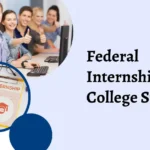
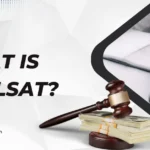
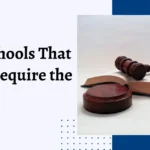



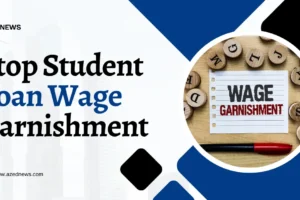
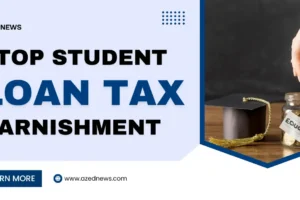
Add Comment